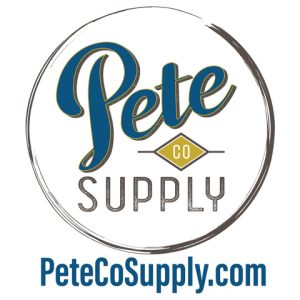Ep. 17 – Food Preservation 101: Understanding the Processes, Tips and Techniques for Optimal Results – Part 1
Podcast: Play in new window | Download () | Embed
In this episode of “Food Preservation 101“, we’ll be exploring the different processes, tips and techniques for optimal results in canning, dehydrating, and freezing food. This is the first part of a multi-part series that aims to provide a comprehensive guide to food preservation.
We’ll start by discussing canning, which is a popular method of food preservation that involves sealing food in jars or cans and then heating them to kill bacteria and other microorganisms. We’ll explore the different types of canning methods, including water bath canning, pressure canning, and dry canning… and provide tips on how to ensure that your canned foods are safe and of high quality.
Water bath canning is suitable for high-acid foods like fruits, jams, and pickles, while low-acid foods like vegetables, meats, and seafood require pressure canning. Proper canning techniques are essential for food safety and shelf life
Next, we’ll dive into dehydrating, a process that involves removing the moisture from food to prevent spoilage. We’ll discuss the various types of dehydrating techniques and offer advice on how to properly prepare your food for dehydration, as well as how to store your dehydrated foods for long-term use.
Dehydrators come in various types, including electric and solar-powered models, and can be used to dehydrate fruits, vegetables, meats, and herbs. Proper preparation, such as slicing food to a consistent size and spacing it evenly on the dehydrator trays, is essential for even drying and quality results.
Finally, we’ll touch on freezing, a popular method of food preservation that is simple and convenient. We’ll discuss the best practices for freezing various types of food, including fruits, vegetables, and meats, and offer tips on how to avoid freezer burn and maintain the quality of your frozen foods.
Freezing helps to slow down the growth of bacteria and enzymes that cause food to spoil, and it is suitable for a wide range of foods, including fruits, vegetables, meats, and prepared meals. Proper packaging and storage are essential for maintaining quality and preventing freezer burn.
Whether you’re a seasoned food preserver or just starting out, this episode is packed with useful information that will help you make the most of your canning, dehydrating, and freezing endeavors. Tune in for an informative and engaging discussion on food preservation techniques!
Carol & Jamie of2GalsHomesteading.com are your homesteading co-hosts. Jamie practices homesteading skills in town. Carol homesteads on the farm.
We use a medium sizedHarvest Right Freeze Dryer. If you Like Canning or Dehydrating, You’re Going To Love Freeze Drying.
Perfectly preserve all your favorite foods with very little effort. Easily create a home food supply that is tastier, healthier, and more diverse than any other food preservation methods.
Avid Armor When we mention Avid Armor, we’re talking about a high qulaityGuide Serieschamber vacuum sealer.
The newest series of Avid Armor is the GS 41 – one series, two sealers, endless pursuits.
Avid Armor always keeps their customers’ passions in mind and when deciding to launch new products, they wanted to create a series of sealers that encompass just that.
Whatever your passion . . . Avid Armor will Guide you there.
Until next time… Put some Kefir on it!
Thank-you PeteCoSupply.com
PeteCoSupply.com is a generous supporter of this podcast. Their sponsorship gift allows us to pay for the hosting of this podcast. <a…


